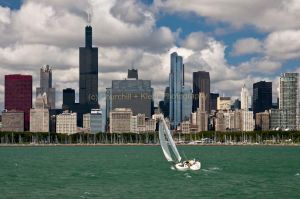Last weekend was incredibly clear, puffy white clouds filled the sky–basically a perfect day for photos. The city never looked better. It took me almost an hour to swim out to this spot, plus it was incredibly difficult to keep the water off my lens. The things I do for my art.

